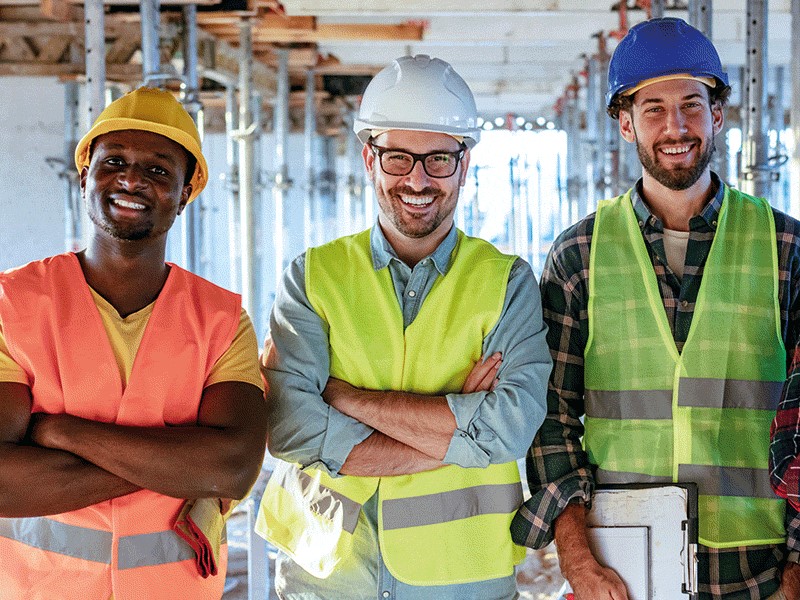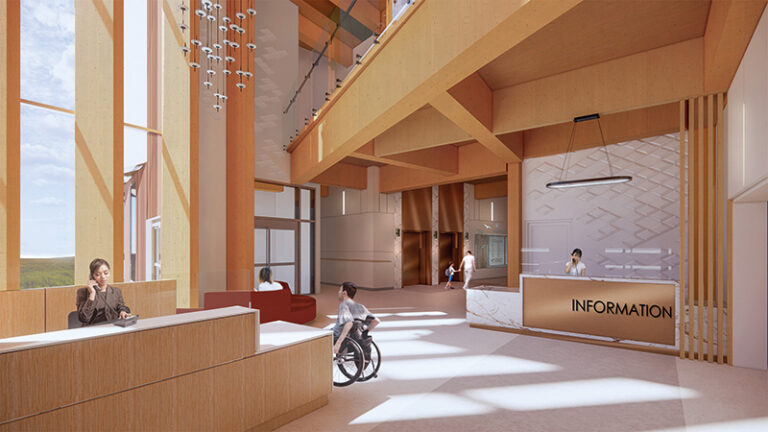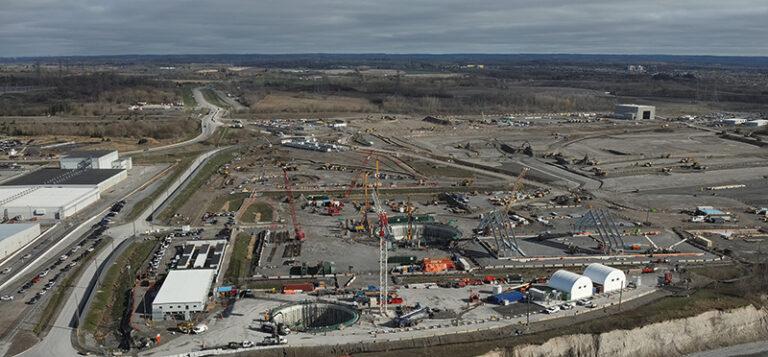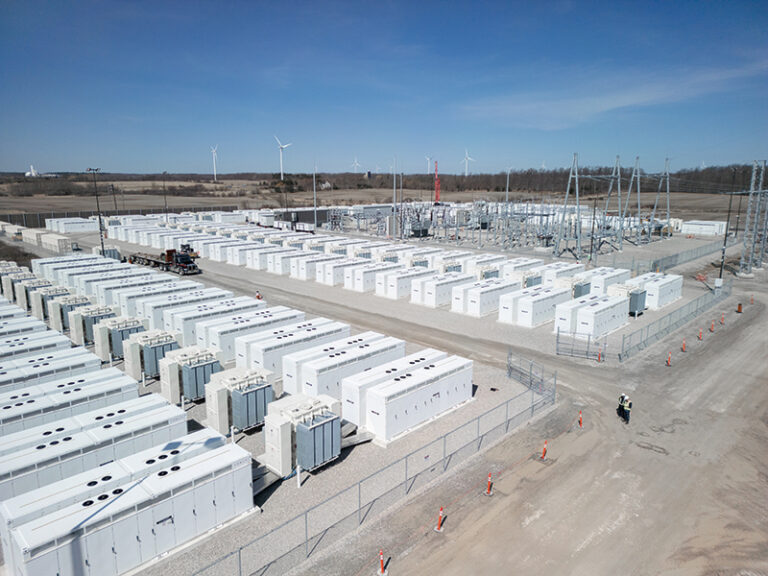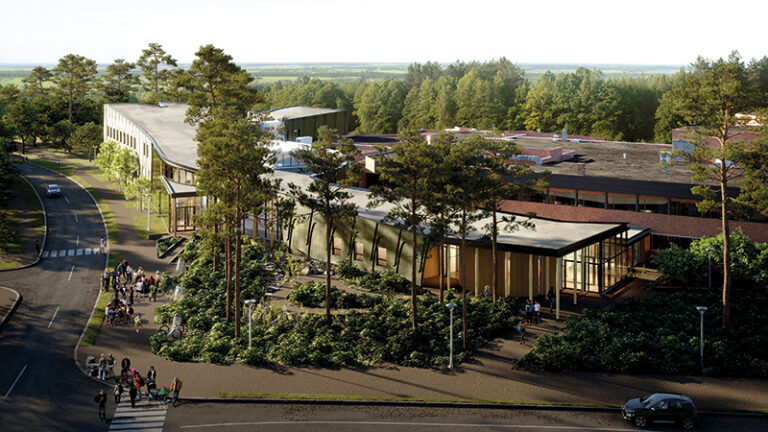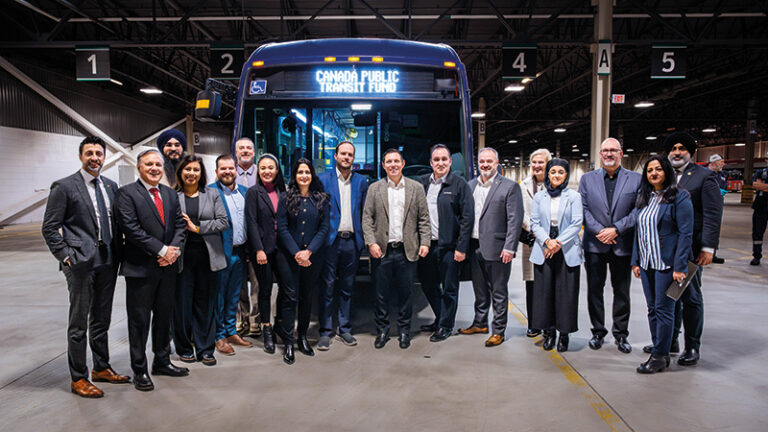Employing more than 1.6 million people and generating $150 billion of annual economic activity, construction accounts for 7.4 per cent of Canada’s GDP. However, a skilled labour shortage driven by an aging workforce and fewer young workers entering trades threatens Canada’s plans to build and repair infrastructure, highlighting the urgent need for growth in the construction workforce.
During a recent ReNew Canada Webinar Series—with support from PCL Construction—a panel of experts discussed the creative and collaborative long- and short-term efforts required to address this challenge.
ReNew Canada: The construction industry continues to suffer from a misguided perception that it’s not a prosperous or respectable career path. What can governments, industry and educational institutions do to help change this?
 Myke Badry (PCL): There’s an onus on us to sell our business. And I think somewhere along the way, we as industry forgot to sell this as a viable career path to young people. As industry, we have to start selling ourselves to the post-secondary school market inside our high schools and teaching people that careers in construction offer a great lifestyle and a great opportunity to educate themselves through experience on the job site. The government plays a role as well, and they need to start funding programs in schools to help bring a strong level of education and awareness to careers in the construction industry. There is also an onus on our workforce to be strong stewards of professionalism.
Myke Badry (PCL): There’s an onus on us to sell our business. And I think somewhere along the way, we as industry forgot to sell this as a viable career path to young people. As industry, we have to start selling ourselves to the post-secondary school market inside our high schools and teaching people that careers in construction offer a great lifestyle and a great opportunity to educate themselves through experience on the job site. The government plays a role as well, and they need to start funding programs in schools to help bring a strong level of education and awareness to careers in the construction industry. There is also an onus on our workforce to be strong stewards of professionalism.
 Jeannine Martin (VRCA): Construction needs a bit of a rebrand. We need to bring sexy back to construction. We need to bring the attention back on the industry as the viable career that it is. Here in B.C., 90 per cent of construction companies are 20 people or less, making it an incredible entrepreneurial opportunity for somebody who wants to go into business and build a career. You can start on the tools and end up running a business—there are many different paths you can go. And much of that is getting out to the schools and in front of the parents to show them the path that their children can follow in construction. We have to amplify those efforts and we have to make connection with more students at a time.
Jeannine Martin (VRCA): Construction needs a bit of a rebrand. We need to bring sexy back to construction. We need to bring the attention back on the industry as the viable career that it is. Here in B.C., 90 per cent of construction companies are 20 people or less, making it an incredible entrepreneurial opportunity for somebody who wants to go into business and build a career. You can start on the tools and end up running a business—there are many different paths you can go. And much of that is getting out to the schools and in front of the parents to show them the path that their children can follow in construction. We have to amplify those efforts and we have to make connection with more students at a time.
 Bill Ferreira (BuildForce Canada): Governments need to do a better job of funding the kinds of programs that expose young people to tools and. When I was in Grade Eight everyone was required to do a home economics class and a shop class. That just doesn’t happen anymore. As an industry we need to work more directly with school boards and many of the local construction associations across the country are doing this.
Bill Ferreira (BuildForce Canada): Governments need to do a better job of funding the kinds of programs that expose young people to tools and. When I was in Grade Eight everyone was required to do a home economics class and a shop class. That just doesn’t happen anymore. As an industry we need to work more directly with school boards and many of the local construction associations across the country are doing this.
Most young people have no idea how to join this industry. They tend to think the chronology should be, finish high school, go to school, then find work, just like most other professions. Construction is unique. That’s not the way we develop individuals. And so a lot of young people struggle with that, and we need to do a better job of educating them on exactly what the pathways are into the industry.
 Barry Murphy (EllisDon): Part of the challenge is recognizing the demographic that we’re targeting is very different than it was 30 years ago. We can’t approach this with old methods, we can’t approach from our perspective. We must approach it from their perspective. They need to understand that there’s a lifestyle and opportunities available through our industry, not just wearing a hard hat and swinging a hammer—which doesn’t appeal to people who spend hours a day on scrolling through TikTok. Some of the most successful and wealthy people I know run construction companies, sub-trades, manufacturing facilities, and young people don’t realize that these opportunities are there.
Barry Murphy (EllisDon): Part of the challenge is recognizing the demographic that we’re targeting is very different than it was 30 years ago. We can’t approach this with old methods, we can’t approach from our perspective. We must approach it from their perspective. They need to understand that there’s a lifestyle and opportunities available through our industry, not just wearing a hard hat and swinging a hammer—which doesn’t appeal to people who spend hours a day on scrolling through TikTok. Some of the most successful and wealthy people I know run construction companies, sub-trades, manufacturing facilities, and young people don’t realize that these opportunities are there.
And it’s not just about educating youth. It’s giving them the information to go back home and educate their parents who may not be supportive of their children working in the construction industry.
What role can Canada’s immigration system play to help address the construction industry labour shortage?
Jeannine Martin: We’re not moving fast enough and we’re not cutting the red tape fast enough. It takes too long to fill the pipeline. We’re also not targeting immigration necessarily in the trades that we need the most. The credential recognition program is a good idea, but the provincial nominee program that we have in B.C. targets people who already have a line on a job offer. We need to bring in people with the skills we need and put them in a job. So, I think there’s work to be done.
Bill Ferreira: The construction industry has been experiencing, since the early 2000s, a significant decline in admissions of individuals with the kinds of skilled trades experience that the construction industry needs. We went from individuals with certificates of apprenticeship and non-apprenticeship certificates at approximately nine per cent of annual admissions down to around two per cent by 2021.
The reality is we can do a lot to increase recruitment domestically, but immigration is going to be a significant part of that labour force mix. It will be not only a supplement, but as landed immigrants make up a larger and larger share of the overall workforce in Canada, we need to ensure the construction industry continues to get its share of landed immigrants, otherwise what have been acute labour shortages thus far, will become chronic.
Barry Murphy: Canada’s so multicultural, it’s very appealing. It’s one of those countries in the world, that nobody has a bad word to say about. I do think we need more of a government push to show that these careers are available in this country. We’ve got to sell what future there is here for, not just the parents, but that there are apprenticeships for their children.
We need to make the process, from a government perspective, easy, fast, and convenient. If we put the onus on the people who are coming over to figure it out, it’s not going to work. We’re doing a lot, but that extra push would make a huge difference to the overall market availability of labour and encourage people to get their family members into the industry.
Myke Badry: It’s up to us as industry to lobby the government to do more and more looks like direct targeted action to recruit people that are going to be here to fill our skilled labour gap. And recruitment looks different in different places and living in the GTA, I meet people all the time that have recently come to Canada and many have found themselves in the service industry frustrated with the cost of living. And I’ll get into a conversation about the benefits of construction and they just simply don’t even know it’s a viable option for a career path. And I think there is a huge onus on us to create structured programs that are directly targeted at filling these spots.
How can the construction industry diversify its hiring approaches to encourage workers from traditionally under-represented groups—including women, Indigenous Peoples, and newcomers to Canada—to join its ranks?
Barry Murphy: A lot of progress has been made in this area in recent years, but you have to look at it from different perspectives. Larger organizations such as EllisDon and PCL, companies that have got the ability to invest in these things that recognize the importance, are able to have fantastic people and culture teams and leaders who are put in place. The challenge is at smaller companies—that’s where we need that diversification. And it is harder because a lot of those people running those companies, they’re trades people who may not necessarily have the education in those areas or the funds and the ability to invest in it. They need support and that would have to come from governments funding or initiatives.
Myke Badry: This is an effort that never really stops, does it? And we will solve one side of the Rubik’s Cube, and then the other side remains unsolved when it comes to diversity. From the perspective of PCL there needs to be constant and intentional action to diversify our workforce on all fronts, which we’re seeing from governments when they put out some of their tenders, and not all the firms have the resources to be able to do this, so it’s the small call to action.
Something that we do is measure ourselves on an ongoing basis around diverse hiring and hold ourselves accountable. And if we all do that, in 10 years the workforce will look very, very different in construction.
Jeannine Martin: So many thoughts, but maybe I’ll just go with this. We had a panel up at our construction leadership forum with some underrepresented groups, and I think that the overwhelming message was that as far as we’ve come, it’s not far enough. Job sites and other areas of our industry are not welcoming for these groups and the behaviors have not changed enough to create a draw that makes them want to stay. And so there’s a lot of work that needs to be done. And it’s about leadership. Leadership comes from the top. When we condone those behaviors, they continue. You have to take action when things are inconsistent with the company values and you have to show that you are actually changing the culture.
Bill Ferreira: We still have work conditions that are less than favorable. They don’t create a particularly inclusive or diverse environment. We’re still fighting about whether we should have separate washrooms for women or not on work sites. Women are still in a lot of cases not being provided with proper PPE. It’s again, not a challenge at the larger company level, but when you get down to the bulk of the industry, there’s still a lot of improvement that needs to happen.
We spend a lot of time focusing on recruitment, but it’s the retention piece that’s also critical. If we can’t retain these individuals, they’re going to walk from the industry and they’re going to talk to their friends. And now the challenge to recruit individuals from those underrepresented groups into the industry has just grown tenfold. There’s still a lot of work left, but we are starting to see a lot of progress as well, in part because of the leadership from some of the larger companies in the industry.
John Tenpenny is the Editor of ReNew Canada.
[This article appeared in the November/December 2024 issue of ReNew Canada.]
Featured image: Employing more thaatn 1.6 million people and generating $150 billion of annual economic activity, construction accounts for 7.4 per cent of Canada’s GDP. (Getty Images)

